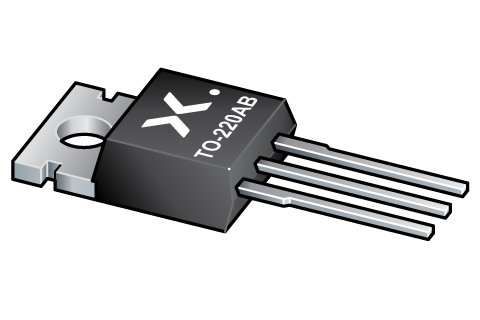
Register once, drag and drop ECAD models into your CAD tool and speed up your design.
Click here for more informationBUK9509-55A
N-channel TrenchMOS FET
N-channel enhancement mode Field-Effect Transistor (FET) in a plastic package using TrenchMOS technology. This product has been designed and qualified to the appropriate AEC standard for use in automotive critical applications.
Features and benefits
- Low conduction losses due to low on-state resistance
- Q101 compliant
- Suitable for logic level gate drive sources
- Suitable for thermally demanding environments due to 175 °C rating
Applications
- 12 V and 24 V loads
- Automotive and general purpose power switching
- Motors, lamps and solenoids
封装
下表中的所有产品型号均已停产 。
| 型号 | 可订购的器件编号,(订购码(12NC)) | 状态 | 标示 | 封装 | 外形图 | 回流焊/波峰焊 | 包装 |
|---|---|---|---|---|---|---|---|
| BUK9509-55A | BUK9509-55A,127 (934057018127) |
Obsolete | BUK9509 55A P**XXYY AZ Batch No. |

TO-220AB (SOT78A) |
SOT78A | 暂无信息 |
文档 (5)
| 文件名称 | 标题 | 类型 | 日期 |
|---|---|---|---|
| AN11156 | Using Power MOSFET Zth Curves | Application note | 2021-01-04 |
| AN11160 | Designing RC Snubbers | Application note | 2024-10-21 |
| AN11172 | Mounting instructions for SOT78 (TO-220AB); SOT186A (TO-220F) | Application note | 2021-05-21 |
| Nexperia_package_poster | Nexperia package poster | Leaflet | 2020-05-15 |
| SOT78A | plastic, single-ended package (heatsink mounted, 1 mounting hole); 3 leads; 2.54 mm pitch; 15.5 mm x 10 mm x 4.3 mm body | Package information | 2020-04-21 |
Longevity
The Nexperia Longevity Program is aimed to provide our customers information from time to time about the expected time that our products can be ordered. The NLP is reviewed and updated regularly by our Executive Management Team. View our longevity program here.
模型
No documents available
How does it work?
The interactive datasheets are based on the Nexperia MOSFET precision electrothermal models. With our interactive datasheets you can simply specify your own conditions interactively. Start by changing the values of the conditions. You can do this by using the sliders in the condition fields. By dragging the sliders you will see how the MOSFET will perform at the new conditions set.